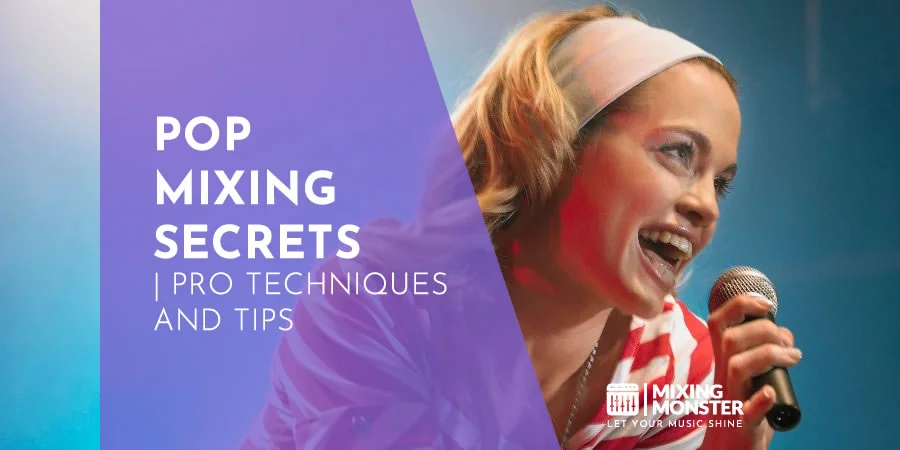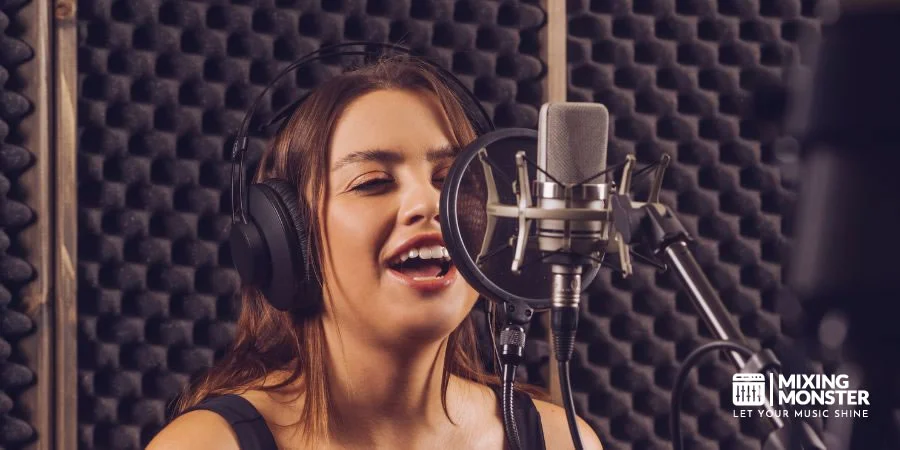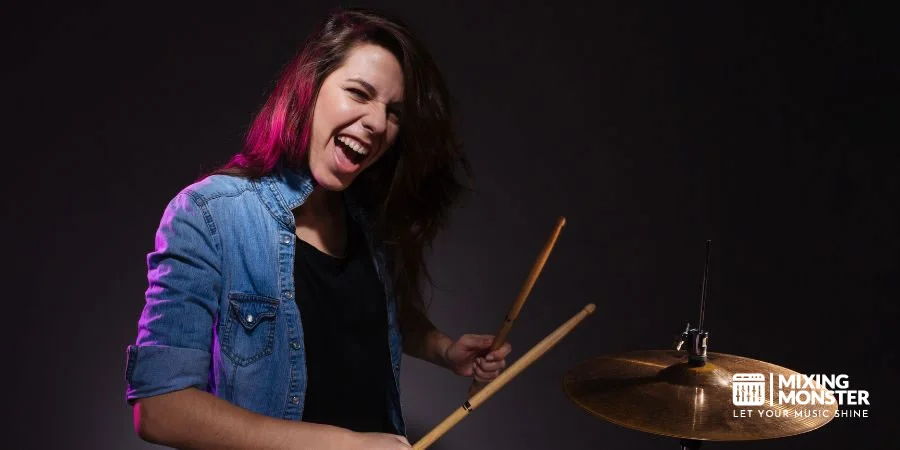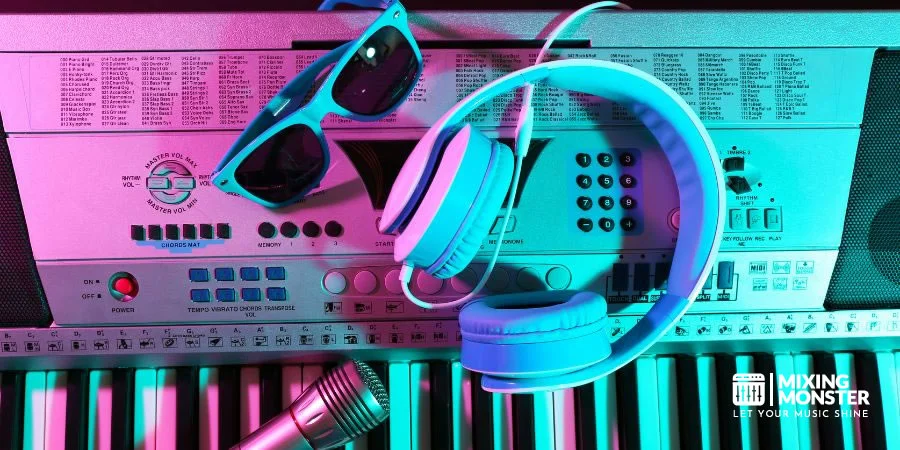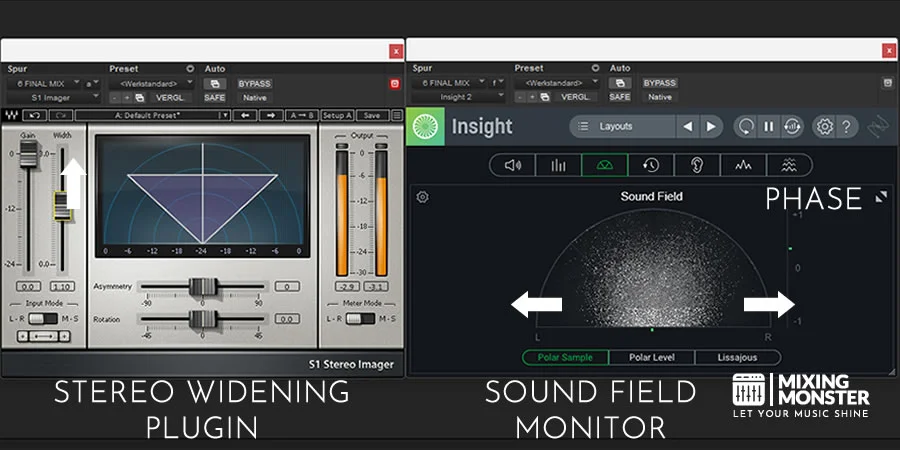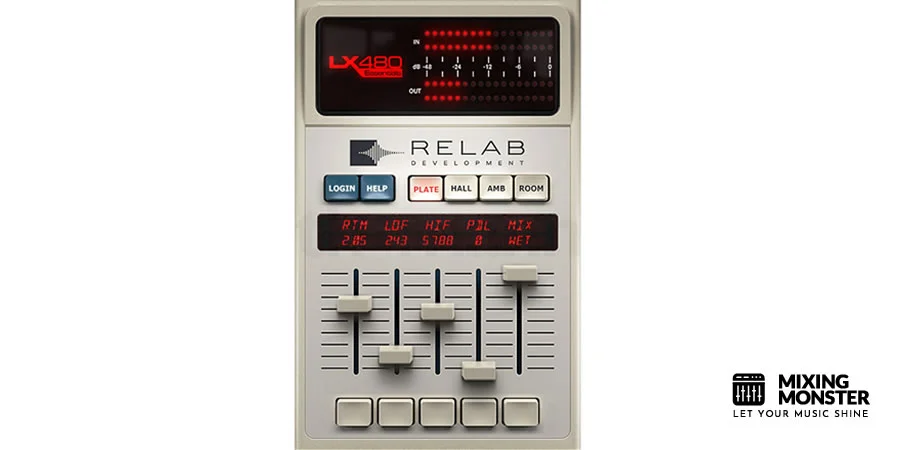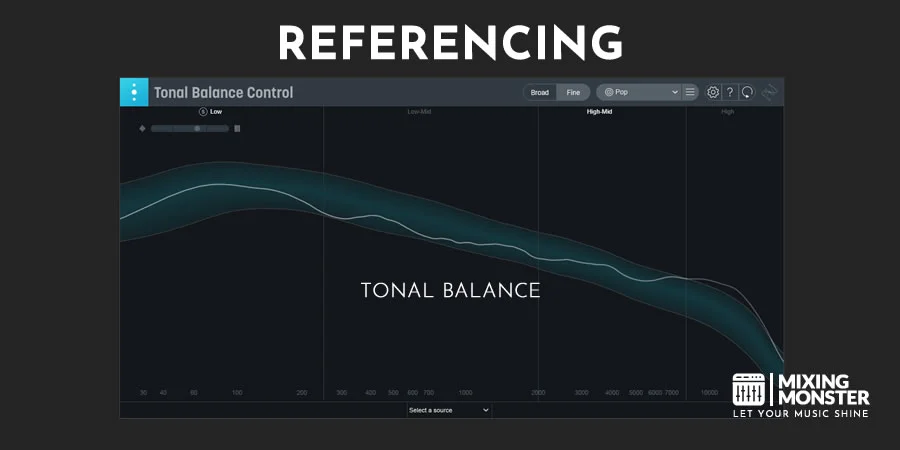Home > Blog > Mixing > Mixing Genres
In the ever-evolving world of pop music, achieving a polished and captivating mix is essential to capturing listeners’ attention and creating a lasting impression. This article will delve into the art of pop mixing, providing valuable tips and best practices for making your tracks stand out in today’s competitive musical landscape.
Mixing pop music involves blending various audio elements, such as vocals, instruments, and effects, to create a polished, cohesive sound. This process requires attention to detail, balancing frequency ranges, and enhancing key elements, such as hooks and lead vocals, to captivate listeners and ensure the track’s commercial success.
Unlock the secrets of crafting chart-topping hits by mastering the art of mixing pop music. Elevate your mixing skills, and create polished, captivating tracks that resonate with listeners and dominate the airwaves.
Table Of Contents
1. Introduction To Pop Music Mixing
2. The Role Of The Hook In Pop Music Mixing
3. Vocal Processing And Treatment In Pop Music Mixing
4. Layering And Thickening Techniques In Pop Music Mixing
5. Mixing Drums And Percussion In Pop Music Mixing
6. Mixing Bass And Low-End Elements In Pop Music Mixing
7. Balancing Electronic And Acoustic Elements In Pop Music Mixing
8. Stereo Imaging And Depth In Pop Music Mixing
9. Use Of Effects And Sound Design In Pop Music Mixing
10. Referencing In Pop Music Mixing
11. Pop Mixing Secrets: Craft A Chart-Topping Masterpiece

1. Introduction To Pop Music Mixing
Pop music, short for “popular music,” is a diverse and ever-evolving genre that appeals to a broad audience. Originating in the 1950s, pop music has since encompassed a variety of styles, borrowing elements from rock, electronic, R&B, and even classical music.
The genre is characterized by its catchy hooks, memorable melodies, and easily accessible themes that resonate with listeners. Over the years, pop music has evolved and adapted to changing musical trends and technological advancements.
From the guitar-driven sound of early pop in the ‘50s and ‘60s to the synth-heavy era of the ‘80s, the rise of hip-hop and R&B influences in the ‘90s and 2000s, and the incorporation of electronic dance music elements in recent years, pop music has remained a dynamic force in the music industry.
This ongoing evolution demands that artists, producers, and mix engineers stay current with the latest production techniques and tools to create a polished, modern sound that keeps listeners engaged.
Mixing for pop music often requires an emphasis on clarity, balance, and a polished sound, which can differ from mixing other genres where rawness or a more organic sound might be desirable.
The unique mixing requirements for pop music include making the lead vocals and hooks stand out, achieving a radio-friendly sound, and blending a wide array of electronic and acoustic elements seamlessly.
This often involves the use of advanced processing techniques, layering, and creative effects to create a mix that is not only engaging but also translates well across various listening platforms and environments.
Experience the impact of professional mixing on a pop song by comparing one of our before-and-after samples:
Pop Music: Before & After (Mixed & Mastered By Mixing Monster)
By examining the contrast between the initial recorded tracks and the final, radio-ready version, you will gain a deeper understanding of the importance and effectiveness of skilled mixing techniques.
2. The Role Of The Hook In Pop Music Mixing
A catchy and memorable hook is a crucial element in pop music, as it serves as the song’s central motif and is designed to grab the listener’s attention.
Hooks are often short, melodic phrases or catchy rhythms that repeat throughout the song, making them easy to remember and sing along to. They play a significant role in a song’s commercial success and its ability to connect with a wide audience.
To make the hook stand out in the mix, consider the following techniques:
How To Mix A Hook In Pop Music:
- Volume Balance:
Ensure the hook is prominent and clearly audible in the mix by adjusting its volume relative to other elements. The hook should be one of the most noticeable aspects of the song without overpowering other important elements like the lead vocals. - Frequency Separation:
Use EQ to carve out a specific frequency range for the hook, allowing it to occupy its own space in the mix. This will help prevent frequency clashes with other instruments and vocals, ensuring clarity and separation. - Stereo Placement:
Experiment with panning and stereo imaging to create a sense of space and width for the hook. This can help it stand out from other elements in the mix and make it more engaging for the listener. - Contrast And Dynamics:
Consider using automation to create dynamic changes in volume, panning, or effects during the hook section. This can emphasize the hook and provide contrast compared to other parts of the song. - Layering:
If the hook is a melodic phrase, consider layering multiple instruments or vocal harmonies to create a fuller, richer sound. This can help the hook cut through the mix and enhance its memorability. - Sound Selection And Timbre:
Choose sounds or instruments with unique and captivating tonal characteristics for the hook. This can make it more distinctive and memorable. - Creative Effects:
Utilize effects like reverb, delay, and modulation to add depth, space, or movement to the hook, making it more engaging and attention-grabbing.
It is essential to ensure that the hook stands out in your mix, maximizing the song’s potential for success in the competitive pop music landscape.
3. Vocal Processing And Treatment In Pop Music Mixing
Lead vocals are a crucial element in pop music, often carrying the song’s emotional weight and lyrical message.
Ensuring that they sound polished and upfront in the mix is vital for creating a professional and engaging track. Here are some tips on processing pop vocals in a mixing session:
How To Mix Vocals In Pop Music:
- EQ:
Use equalization to enhance the clarity and presence of the vocals. Start by removing any unwanted low frequencies with a high-pass filter, typically below 80-100 Hz. Boost the presence of the vocals by applying a subtle boost around 2-5 kHz, and add air or brightness by gently boosting frequencies above 10 kHz. Always trust your ears and make adjustments based on the specific vocal recording. - Compression:
Apply compression to even out the dynamic range of the vocals and help them sit consistently in the mix. Use a moderate attack time (10-30 ms) to preserve the vocal’s natural transients and a release time that follows the tempo of the song. Aim for 2-4 dB of gain reduction with a ratio between 2:1 and 4:1. - Tuning:
Use pitch correction software like Auto-Tune or Melodyne to correct any minor pitch inaccuracies and ensure that the vocals are in tune with the rest of the track. Apply tuning subtly to maintain the natural character of the singer’s voice. - De-Essing:
Apply a de-esser to control sibilant sounds (like “s” and “sh”) that can become harsh and distracting when the vocals are compressed and EQ’d. Set the de-esser’s threshold and frequency range to target only the problematic sibilance, avoiding over-processing. - Reverb:
Add a sense of space and depth to the vocals with a touch of reverb. Choose a reverb type that complements the song (e.g., a room, plate, or hall reverb) and adjust the decay time and mix level to achieve the desired effect. Be careful not to overdo it, as too much reverb can make the vocals sound distant or muddy. - Delay:
Use delay to create a sense of width and space in the mix. Opt for a stereo delay with different delay times for the left and right channels, and adjust the feedback and mix levels for a subtle effect that doesn’t overpower the vocals. - Automation:
Utilize volume, panning, and effect automation to ensure the vocals remain upfront and engaging throughout the song. Automate reverb and delay sends during different sections to create a sense of depth and movement.
Try to achieve polished, clear and impactful-sounding pop vocals that stand out in the mix and resonate with listeners at all times.
4. Layering And Thickening Techniques In Pop Music Mixing
Layering multiple elements in a pop music mix can create a fuller, richer sound by adding depth, complexity, and interest to the arrangement.
This approach is characteristic of pop music, as it helps to create engaging and memorable sonic textures that appeal to a wide audience. Here’s how layering various elements can contribute to a richer sound:
How To Layer Multiple Elements In Pop Music Mixing:
- Vocal layering:
Doubling or even tripling the lead vocal can make it sound more powerful and present. Additionally, harmonies and background vocals can add depth and interest, creating a lush and engaging vocal arrangement. - Synth Layering:
Combining multiple synthesizers, each playing similar or complementary parts, can create a richer and more complex texture. For instance, layering a pad synth with a pluck sound can enhance the attack while maintaining the warmth and depth of the pad. - Guitar Layering:
Recording and panning multiple guitar tracks can add thickness, width, and depth to the mix. Using different guitar tones, playing techniques, or even different guitars can further enhance the richness of the layered sound. - Percussion Layering:
Adding layers of percussion, such as shakers, tambourines, and claps, can enhance the rhythmic drive of a song, making it more dynamic and engaging. - Drum Layering:
Layering drum samples or blending acoustic and electronic drum elements can create a unique, punchy, and full drum sound that cuts through the mix. - Bass Layering:
Combining a sub-bass synth with a midrange bass sound or a bass guitar can help create a more powerful and defined low end.
When layering elements, it’s essential to consider the following:
- Frequency separation:
Use EQ to carve out space for each element, ensuring that they occupy their own frequency range in the mix. This prevents frequency clashes and maintains clarity. - Volume Balance:
Adjust the volume of each layer to ensure that they blend well together and don’t overpower other elements in the mix. - Panning And Stereo Imaging:
Experiment with panning and stereo imaging to create a sense of space and width for the layered elements, making the mix feel more expansive. - Dynamics And Phase:
Ensure that layered elements are phase-aligned and have similar dynamics to avoid phase cancellation or other sonic issues that can result from poor layering.
Layering multiple elements in a pop music mix can lead to a fuller, richer sound that captivates listeners and enhances the overall production quality.

5. Mixing Drums And Percussion In Pop Music Mixing
Achieving a modern, punchy drum sound is essential for creating a strong foundation in pop music.
Here are some tips to help you accomplish this goal while complementing the pop music style:
How To Mix Drums And Percussion In Pop Music:
- Sample Layering:
Layering drum samples can help you create a unique and full drum sound. Choose samples that complement each other and contribute different characteristics to the overall sound. For example, layer a kick drum sample with a strong low-end presence with another kick sample that has a more pronounced attack. Be mindful of phase issues when layering and ensure the samples are aligned correctly. - Parallel Compression:
Parallel compression, also known as New York compression, involves blending a heavily compressed version of the drum track with the original, uncompressed track. This technique can help you achieve a punchy and powerful drum sound without sacrificing the natural dynamics of the original recording. Use a compressor with a fast attack and release time and a high compression ratio (e.g., 10:1 or higher) on the parallel track, then blend it with the original track to taste. - Transient Shaping:
Transient shapers are tools that allow you to enhance or reduce the attack and sustain portions of an audio signal. Use a transient shaper on individual drum elements or the drum bus to accentuate the initial attack of the drums, making them punchier and more prominent in the mix. Be cautious not to overdo the transient shaping, as it can cause the drums to sound unnatural or overly aggressive. - EQ:
Use EQ to sculpt the tone of each drum element, accentuating their strengths and carving out space for each in the mix. For example, boost the low end of the kick drum around 60-100 Hz for added weight, and add presence to the snare drum by boosting around 1-4 kHz. Use high-pass filters to remove unnecessary low frequencies from cymbals and hi-hats. - Stereo Imaging:
Create a sense of space and depth in your drum mix by using panning and stereo imaging. Pan the individual elements of the drum kit to create a realistic or engaging stereo image, making sure the kick and snare stay centered for maximum impact. - Reverb And Ambience:
Add a subtle amount of reverb to the drum bus or individual drum elements to create a sense of space and depth. Choose a reverb type that complements drums (e.g. plate or hall reverb) and adjust the decay time and mix level to achieve a natural-sounding ambience. - Drum Replacement:
In some cases, the original drum recordings may not provide the desired sound. Drum replacement involves substituting weak or poorly recorded drum sounds with high-quality samples to achieve a more polished and professional result. Use drum replacement software or manually align the samples with the original recordings, ensuring they maintain their natural feel and timing.
Focus on creating a modern, punchy drum sound that complements the pop music style and provides a solid foundation for your mix.
6. Mixing Bass And Low-End Elements In Pop Music Mixing
Creating a tight and powerful low-end is crucial for a well-balanced mix in pop music.
It provides the foundation and supports the rest of the elements without overpowering them. Let’s learn how to achieve a tight and powerful low-end in pop music:
How To Mix Bass And Low-End In Pop Music:
- EQ And Frequency Separation:
Use EQ to carve out space for the bass and kick drum in the mix. For example, apply a high-pass filter on other elements to remove unnecessary low frequencies that might conflict with the low-end. Boost the fundamental frequencies of the bass and kick drum to add weight, and cut frequencies where they clash to create separation. - Sidechain Compression:
Sidechain compression is a technique where the compressor on the bass track is triggered by the kick drum, momentarily reducing the bass volume each time the kick hits. This allows the kick to cut through the mix without conflicting with the bass, creating a tighter and more cohesive low-end. Adjust the attack, release, and ratio settings on the compressor to achieve the desired pumping effect. - Harmonic Enhancement:
Techniques like saturation, distortion, or harmonic excitation can add harmonics to the bass, making it more audible on smaller speakers and improving its presence in the mix. Use these effects subtly to avoid introducing unwanted distortion or muddiness. - Monophonic Bass:
Ensure that the bass lines are monophonic (playing only one note at a time) to prevent overlapping frequencies and phase issues, which can lead to a less defined low-end. - Sub-Bass Layering:
In some cases, layering a clean sub-bass synth underneath the main bass sound can help reinforce the low-end, especially if the main bass sound lacks sufficient low-frequency content. Make sure to carefully balance the volume of the sub-bass to avoid overpowering the mix. - Stereo Imaging:
Keep the low-end elements, such as the bass and kick drum, centered in the mix to ensure a tight and focused low-end. Avoid applying stereo widening effects on low frequencies, as this can lead to phase issues and an unfocused bass sound. - Consistent Levels:
Use compression or automation to maintain consistent bass levels throughout the mix, ensuring that the low-end remains balanced and supportive. - Monitoring And Referencing:
Regularly check your mix on different speaker systems, including headphones, to ensure that the low-end translates well across various listening environments. Use reference tracks with a similar low-end balance to gauge your mix’s low-end performance.
Creating a tight and powerful low-end that supports the rest of the mix contributes to an impactful and engaging sound in pop music.
7. Balancing Electronic And Acoustic Elements In Pop Music Mixing
Mixing electronic sounds with acoustic instruments in a pop music context requires careful blending and balance to achieve a seamless and cohesive sound.
Let’s help you mix these elements effectively:
How To Mix Electronic And Acoustic Elements In Pop Music:
- EQ And Frequency Separation:
Use equalization to carve out space for each element in the mix, preventing frequency clashes between electronic and acoustic instruments. For example, if an electronic synth pad occupies a similar frequency range as an acoustic guitar, use EQ to create separation by cutting frequencies in one instrument and boosting the same range in the other. - Dynamics And Compression:
Apply appropriate compression to both electronic and acoustic elements to control their dynamic range and help them sit well together in the mix. Be mindful of maintaining the natural dynamics of acoustic instruments while preventing electronic elements from becoming too overpowering. - Stereo Imaging And Panning:
Experiment with panning and stereo imaging to create a sense of space and width in the mix. Pan electronic and acoustic elements in a way that complements each other and creates a balanced and engaging stereo image. Be cautious not to pan low-frequency elements like kick drums and bass too far from the center, as this can result in an unbalanced low-end. - Reverb And Ambience:
Use reverb and other spatial effects to create a sense of depth and cohesion between electronic and acoustic elements. Select reverb types and settings that complement the overall vibe of the song, and apply them judiciously to avoid muddiness. You can use different reverbs for electronic and acoustic elements or use a shared reverb bus to create a sense of unity. - Layering And Blending:
In some cases, layering electronic sounds with acoustic instruments can create interesting textures and enhance the overall arrangement. Be selective with the layers you choose, and ensure that they complement each other in terms of timbre, rhythm, and frequency content. - Volume Balance:
Ensure that the volume levels of electronic and acoustic elements are well-balanced, allowing each to shine without overpowering the other. Automation can be helpful for maintaining a consistent balance throughout the song, especially if the dynamics of the acoustic instruments vary. - Transient Shaping:
Use transient shaping tools to enhance or reduce the attack of certain elements in the mix, helping them to blend more seamlessly. For instance, you might want to soften the attack of a synthesized drum sound to help it blend better with live acoustic drums. - Reference Tracks:
Use reference tracks with a similar blend of electronic and acoustic elements to help guide your mixing decisions. Regularly compare your mix to the reference tracks to ensure you’re achieving a balanced and cohesive blend.
Electronic and acoustic elements need to work together harmoniously and fit the pop genre’s aesthetic.
8. Stereo Imaging And Depth In Pop Music Mixing
Achieving a wide and spacious stereo image while maintaining clarity and focus is essential for a professional-sounding mix in pop music.
Let’s see how you create an expansive stereo image without compromising the focus of important elements like lead vocals and hooks:
How To Get Width And Depth In Pop Music Mixing:
- Keep Lead Vocals And Hooks Centered:
To maintain focus on the lead vocals and hooks, keep them centered in the stereo field. This ensures they remain prominent and easily discernible, regardless of the listener’s environment. - Panning:
Use panning strategically to create a sense of space and width in your mix. Pan supporting elements, such as backing vocals, rhythm guitars, and keyboards, to the left and right, while keeping crucial elements like kick, snare, and bass centered. Be cautious not to overdo panning, as extreme panning can lead to an unbalanced mix. - Contrasting Frequency Content:
Create contrast between elements by ensuring they occupy different frequency ranges. Use EQ to carve out space for each instrument, allowing them to shine without competing with each other. This approach helps maintain clarity and separation in the mix. - Use Of Stereo Effects:
Apply stereo effects, such as delay, reverb, and chorus, to enhance the stereo image of specific elements. Use these effects judiciously and avoid applying them to elements that should remain focused, like lead vocals and hooks. Ensure that the wet/dry balance is appropriate, as too much effect can lead to a washed-out or cluttered mix. - Double Tracking And Layering:
Double tracking instruments, such as guitars and backing vocals, can create a sense of space and width. Pan the doubled parts to the left and right, ensuring they are slightly different (e.g., different takes or slight pitch variations) to avoid phase issues.
Creating a wide and spacious stereo image in pop music while maintaining clarity and focus on essential elements like lead vocals and hooks is an art itself.
9. Use Of Effects And Sound Design In Pop Music Mixing
Creative use of effects, such as reverb, delay, and modulation, can enhance a pop mix and create a sense of space, depth, and interest.
Specific effects can be used effectively in pop music and are commonly used in top productions:
How To Use Effects In Pop Music Mixing:
Reverb:
- Vocal Ambiance:
Add a subtle room or plate reverb to lead vocals to create a sense of space and depth, making the vocals feel more three-dimensional and less dry. - Drum Space:
Apply a room or hall reverb to the drum bus or individual drum elements to create a sense of space and cohesion between the drum sounds. - Gated Reverb:
Use gated reverb on snares or other percussive elements to create a distinctive, larger-than-life sound that was popular in the 80s and has made a resurgence in modern pop.
Delay:
- Vocal Thickening:
Use a short slapback delay (50-200 ms) on vocals to create a sense of depth and thickness without cluttering the mix. - Stereo Widening:
Apply a ping-pong delay to guitars, synths, or other melodic elements, causing the delayed signal to bounce between the left and right channels, creating a sense of width and space. - Rhythmic Interest:
Sync the delay time to the song’s tempo, creating rhythmic repeats that enhance the groove and add interest to elements like guitar or synth parts.
Modulation:
- Chorus:
Use chorus effects on guitars, synths, or backing vocals to create a lush, shimmering sound that adds depth and texture to the mix. This effect can be particularly effective for creating an 80s-inspired vibe. - Phaser Or Flanger:
Apply phaser or flanger effects to guitars, synths, or even drum elements to create a swirling, evolving texture that adds movement and interest to the mix. These effects can be used subtly for a gentle sense of motion or more prominently for a dramatic, psychedelic effect. - Tremolo:
Use tremolo to create rhythmic pulsing or panning effects on guitars, synths, or keys, adding a sense of movement and energy to the mix.
When using effects creatively in pop music, it’s essential to strike a balance between adding interest and maintaining clarity in the mix. Be mindful of the wet/dry balance and avoid over-processing the elements, as too much effect can lead to a cluttered or washed-out mix.
Experiment with different combinations of effects to create a unique and engaging sound that enhances the overall impact of your pop production.
10. Referencing In Pop Music Mixing
Comparing your mix to successful pop tracks, often referred to as using “reference tracks,” is an invaluable practice that can significantly improve the quality of your mix.
By doing so, you can gain insights into the balance, frequency content, and overall loudness of well-produced tracks, and apply those insights to your own mix.
- Balance:
Listening to reference tracks can help you understand how elements should be balanced in your mix. This includes the relationship between vocals, drums, bass, and other instruments, as well as the panning and stereo image. By comparing your mix to successful pop tracks, you can identify areas where adjustments may be needed to achieve a more professional balance. - Frequency Content:
Analyzing the frequency content of successful pop tracks can provide a benchmark for your mix’s overall tonal balance. This can help you identify potential issues, such as a lack of low-end, excessive midrange, or harsh high frequencies. By making adjustments based on your observations, you can create a mix with a more polished and well-rounded frequency spectrum. - Overall Loudness:
The loudness of your mix plays a significant role in its perceived quality and impact. Comparing the overall loudness of your mix to that of successful pop tracks can help you achieve an appropriate level of loudness while avoiding excessive compression or limiting. This ensures that your mix maintains its dynamic range while remaining competitive in terms of loudness.
When using reference tracks, it’s essential to choose tracks that are similar to your mix in terms of genre, style, and production aesthetic.
It’s also crucial to level-match your mix and the reference tracks to ensure accurate comparisons, as our ears tend to perceive louder sounds as better.
By regularly comparing your mix to successful pop tracks, you can develop a better understanding of the qualities that contribute to a professional-sounding mix, ultimately helping you make informed mixing decisions that enhance the impact and appeal of your own productions.
11. Pop Mixing Secrets: Craft A Chart-Topping Masterpiece
In summary, mixing pop music requires a unique approach that takes into account the genre’s specific characteristics and goals.
Below you find some key points of this article to consider when mixing your pop music project!
How To Mix Pop Music:
- Ensuring that hooks and lead vocals are clear and prominent in the mix.
- Processing vocals with EQ, compression, tuning, de-essing, and effects like reverb and delay to achieve a polished sound.
- Layering multiple elements to create a fuller, richer sound.
- Achieving a modern, punchy drum sound using techniques like sample layering, parallel compression, and transient shaping.
- Creating a tight and powerful low-end that supports the mix without overpowering other elements, using sidechain compression and harmonic enhancement techniques.
- Mixing electronic and acoustic elements seamlessly to fit the pop genre.
- Achieving a wide and spacious stereo image while maintaining clarity and focus.
- Using effects like reverb, delay, and modulation creatively to enhance the mix and create a sense of space, depth, and interest.
- Comparing your mix to successful pop tracks to assess balance, frequency content, and overall loudness.
- Continuously refining your mixing skills through practice and learning from successful examples in the genre.
Adapting your mixing techniques to the unique requirements of pop music is crucial for achieving a professional and competitive sound. As with any creative pursuit, practice and continued learning are essential for improving your skills and staying up-to-date with industry trends and techniques.
Stay dedicated to honing your craft and can create compelling and impactful pop mixes that become chart-topping masterpieces!

